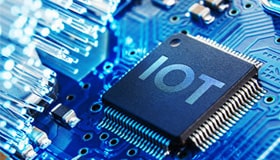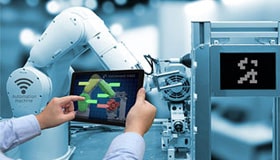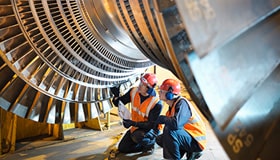
Bringing ethernet to the edge with 10BASE-T1S technology
Today, many different technologies are used to interconnect devices in industrial applications, whether for factory or process automation, building or home automation, computer server backplanes, or automotive networks. These technologies include field buses, RS-485, UARTs, CAN and portion with 'others'.
All these technologies pose their own challenges in implementation, with each having their own hardware and software interfaces and differing characteristics such as EMC performance.
One of the best options is to use an all-Ethernet architecture, which greatly simplifies how a system is created and managed. This brings a number of benefits:
- The same protocols are used, whatever the speed of the physical layer
- The security infrastructure is well understood and proven. Devices can be reliably authenticated and data can be encrypted in standardized ways. Software and firmware can be securely updated in remote devices.
- Ethernet is commonly used, both in the information technology (IT) and operational technology (OT) worlds.
Closer to the edge
Ethernet fits well with the trend to move from distributed systems, which tend to be defined by the hardware involved, to more centralized, software-defined systems. In this technique, a number of application-specific buses are replaced by an IP-based and ubiquitous Ethernet network.
This eliminates the need for gateways to translate between different hardware approaches, cutting the complex wiring needed. Instead, low-cost, single-pair cabling brings Ethernet all the way to the edge of the network.
Traditional IT networks enable communications at the highest levels, while OT networks are used within buildings to control processes and assembly lines. As we get closer to the edge of the enterprise network, sensors, actuators, and other low-level devices become common.
Ethernet allows a common way to connect and communicate with all these elements to make their data available to higher levels.
Legacy systems use many different hardware approaches, each with its own software infrastructure. By contrast, in an All-Ethernet implementation, the communication software stack is the same for all Ethernet devices, meaning it is much easier to scale the bandwidth to move increasing amounts of data.
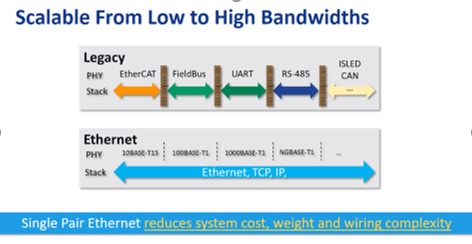
Figure 1: Legacy systems use many different hardware approaches, each with its own software infrastructure
The result is a more powerful, flexible network to meet a range of industrial challenges. It also aids in producing functional safety, where automatic protections make sure systems fail in a predictable manner (fail-safe). Functional safety is a system-level concept. Many Microchip products are functional-safety ready to help system designers create complete systems.
Single pair ethernet
Bringing Ethernet all the way to actuators and sensors at the edge is achieved using Single Pair Ethernet or SPE.
SPE is also referred to as T1 or T1 Ethernet, which refers to one balanced pair of wires. Some applications use a twisted pair of wires, but others use just two wires running alongside each other.
SPE only defines the physical connections of an Ethernet system, with all the higher software layers remaining unchanged. This ensures a seamless architecture that encompasses all speeds.
One of these SPE Ethernet technologies is 10BASE-T1S. The first part of the name specifies the bandwidth in Mbit/s – thus, 10BASE means 10 Mbit/s, while the letter after T1 refers to the range of the technology, in this case S for short reach. There are standards for 10BASE-T1S, 10BASE-T1L (L for Long reach), 100BASE-T1 and 1000BASE-T1. Even higher data rates are being defined for 2.5, 5 and 10 Gbit/s.
10BASE-T1S supports the mechanisms used in Audio Video Bridging (AVB) and Time Sensitive Network (TSN) applications. Networks can be fully synchronized using the IEEE 1588 protocols, along with other TSN mechanisms.
Defining the standard
10BASE-T1S technology is defined by the IEEE 802.3cg standard published in 2019, with Microchip being one of the key participants. It uses a single balanced pair of conductors, which can be a single twisted pair of wires, other configurations for wire pairs, or even parallel traces on a printed circuit board or server backplane.
The standard was developed to expand Ethernet to the edge of OT networks. 10 Mbit/s was deemed a good bandwidth to provide for future growth, as existing systems had bandwidths of hundreds of kilobits per second.
The technology uses half-duplex communication and allows a flexible topology, with options from point-to-point to multidrop configurations, where multiple devices connect to a bus line formed of a single pair of wires.
A wide range of applications
It is often thought that SPE or T1 devices are just for the automotive world. In reality, they have many different applications in industry, home and building automation, computer servers, and other transportation fields.
Factory automation typically involves many sensors and actuators to control assembly lines and packaging machines. Other industrial applications include racks built into cabinets with an intra-system management interface, along with temperature sensors, fans, voltage monitors, DC-to-DC converters, and other modules.
Control units will have many on/off switches, buttons, converters, relays, and I/O cards that need to be controlled and which provide data for the overall system.
Building automation includes lighting applications, elevators, HVAC, solar power systems, and a variety of sensors. This is another example where many devices with relatively low bandwidth requirements can benefit from communication over a common network interface.
Computer servers and other electronic systems have many of the same requirements as industrial applications in compact frames. They also have intra-system management interfaces with switches, temperature sensors, fans and voltage monitors, among others.
Backplanes are used to configure and monitor boards plugged into slots. Traditionally, I2C has been used for this purpose – however, 10BASE-T1S provides much more flexibility and a simpler mechanism to control and communicate with multiple devices.
Essentially, SPE can be used for any application that involves communicating with different sensors and actuators and requires the movement of information and control data.
Increase revenues
One of the major benefits of 10BASE-T1S is that it improves revenue because it helps create new and innovative products that bring Ethernet to the edges of IIoT networks.
Data can be accessed at the far reaches of the network - all levels of the network can access the data, since it uses one common format. Operations can be controlled more easily and insights can be gained through comprehensive access to all connected components.
Costs are also reduced through the use of simpler components, simpler software, and common wiring. With Ethernet, there is no need for complex gateways to translate between the different legacy hardware and software used in the past. Ethernet switches already know how to send different data rates to different ports, and a common frame structure between the ports removes the need to modify the data as it is transmitted.
The multidrop architecture of 10BASE-T1S reduces cost by cutting the number of ports needed in Ethernet switches as multiple devices connect to a common bus line.
The single pair of wires of 10BASE-T1S is also easier to install, lighter, more flexible, and more cost-effective.
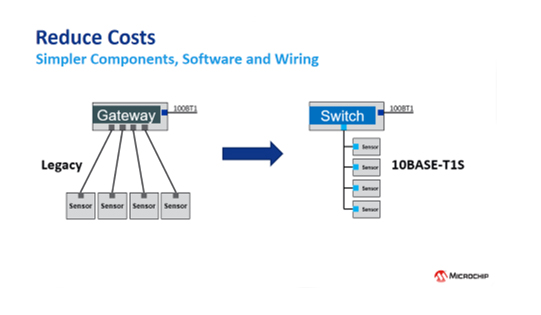
Figure 2: Costs are reduced by simpler components, software and wiring
Reduce risk
Along with increasing revenue and reducing cost, 10BASE-T1S helps mitigate risk by using unified interfaces and well-established security mechanisms throughout the enterprise.
Having Ethernet connectivity at the edge of the network can make use of design resources and reduce risk by enabling compatible hardware and software design, development, testing and maintenance at all levels of IT and OT networks.
Microchip offers resources for designers
Microchip offers resources to design and develop complete networks. Its 10BASE-T1S RMII and MII Evaluation boards fit onto many Microchip microcontroller boards – they can also be attached to customer designs. They are compact and include an Ethernet Bus Interface Network or BIN, also known as an Analog Front End or AFE.
The 10BASE-T1S PHY USB Evaluation Board can be plugged into a USB host to make it a 10BASE-T1S node. This evaluation board comes with drivers for both Linux and Windows.
Microchip’s MPLAB® Harmony Development Framework includes support to integrate 10BASE-T1S technology with Microchip microcontrollers and microprocessors.
These products make it easier to design solutions that bring Ethernet closer to the edge, allowing many more companies to easily capture data from remote sensors and benefit more fully from the Industrial Internet of Things.
CONCLUSION
Jump-start your designs that require 10BASE-T1S Single Pair Ethernet (SPE) communication and high-performance cores with deterministic response and rich peripherals. Click here
Download article in PDF